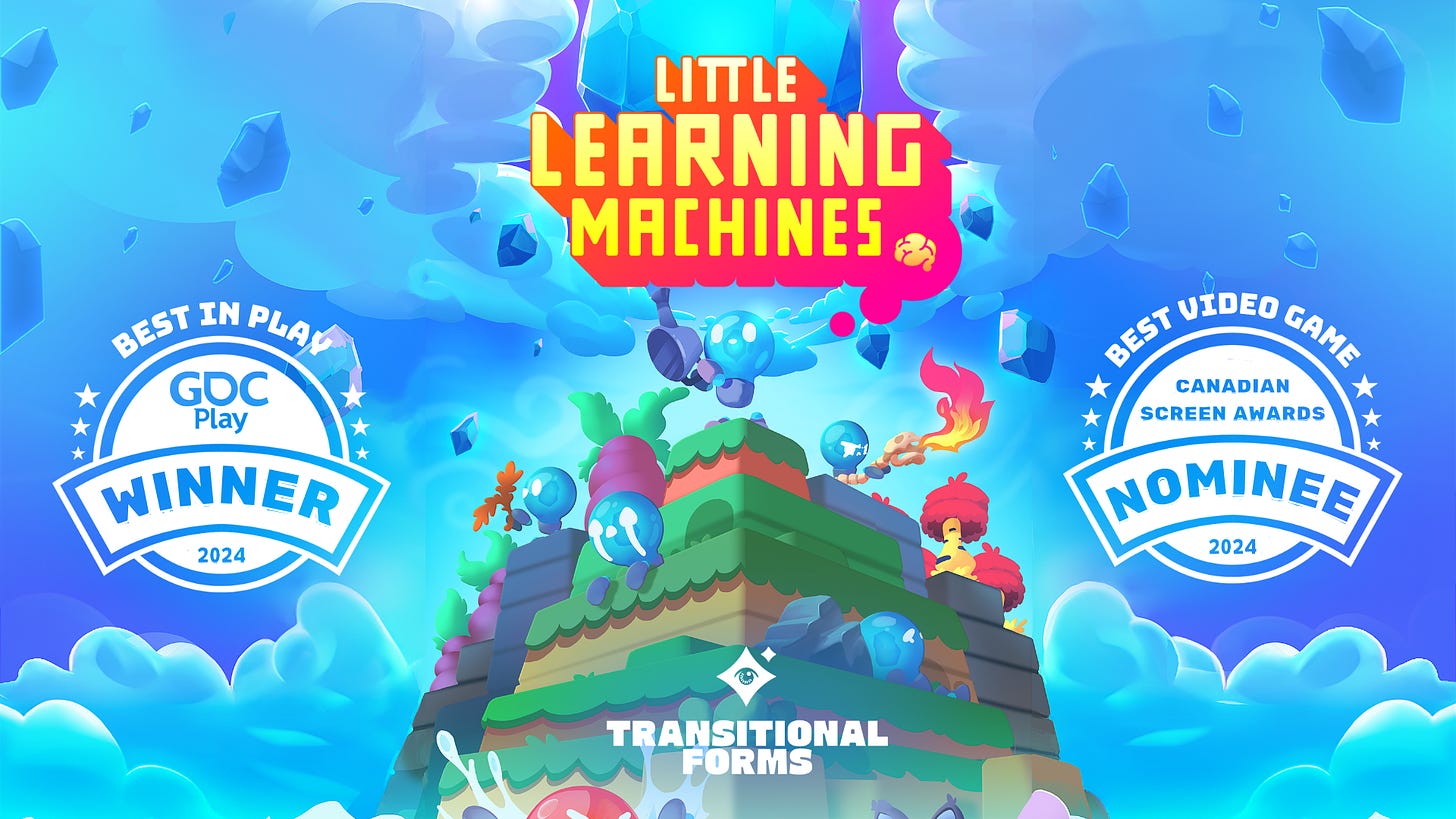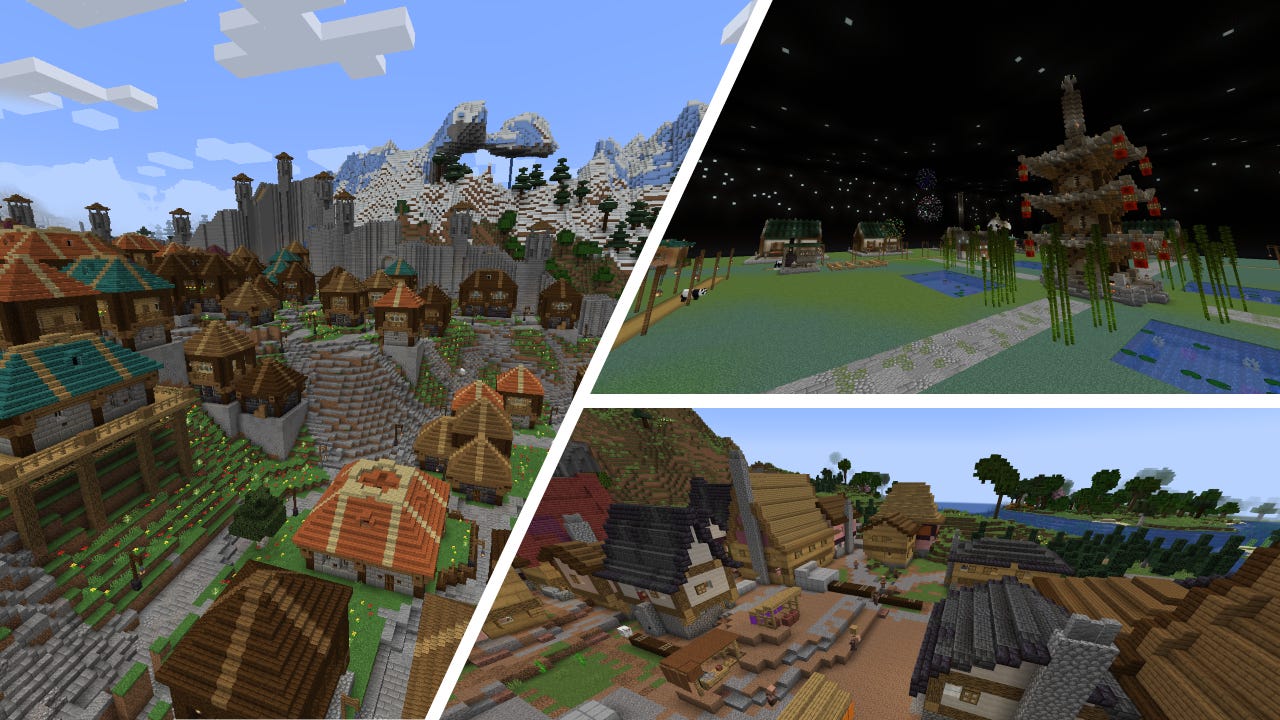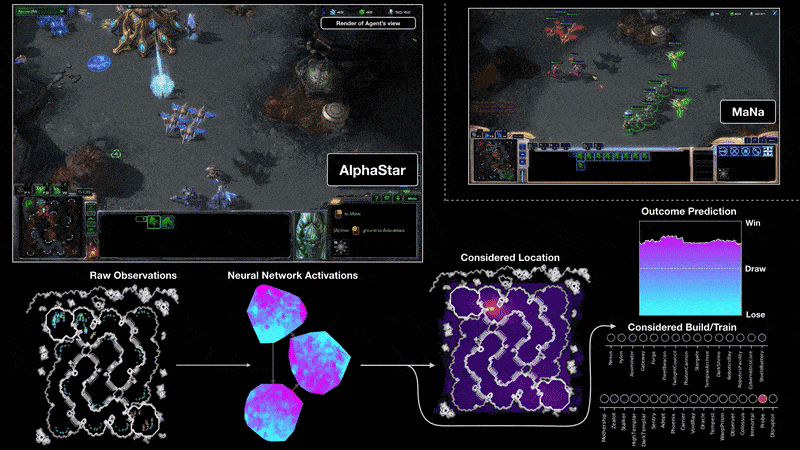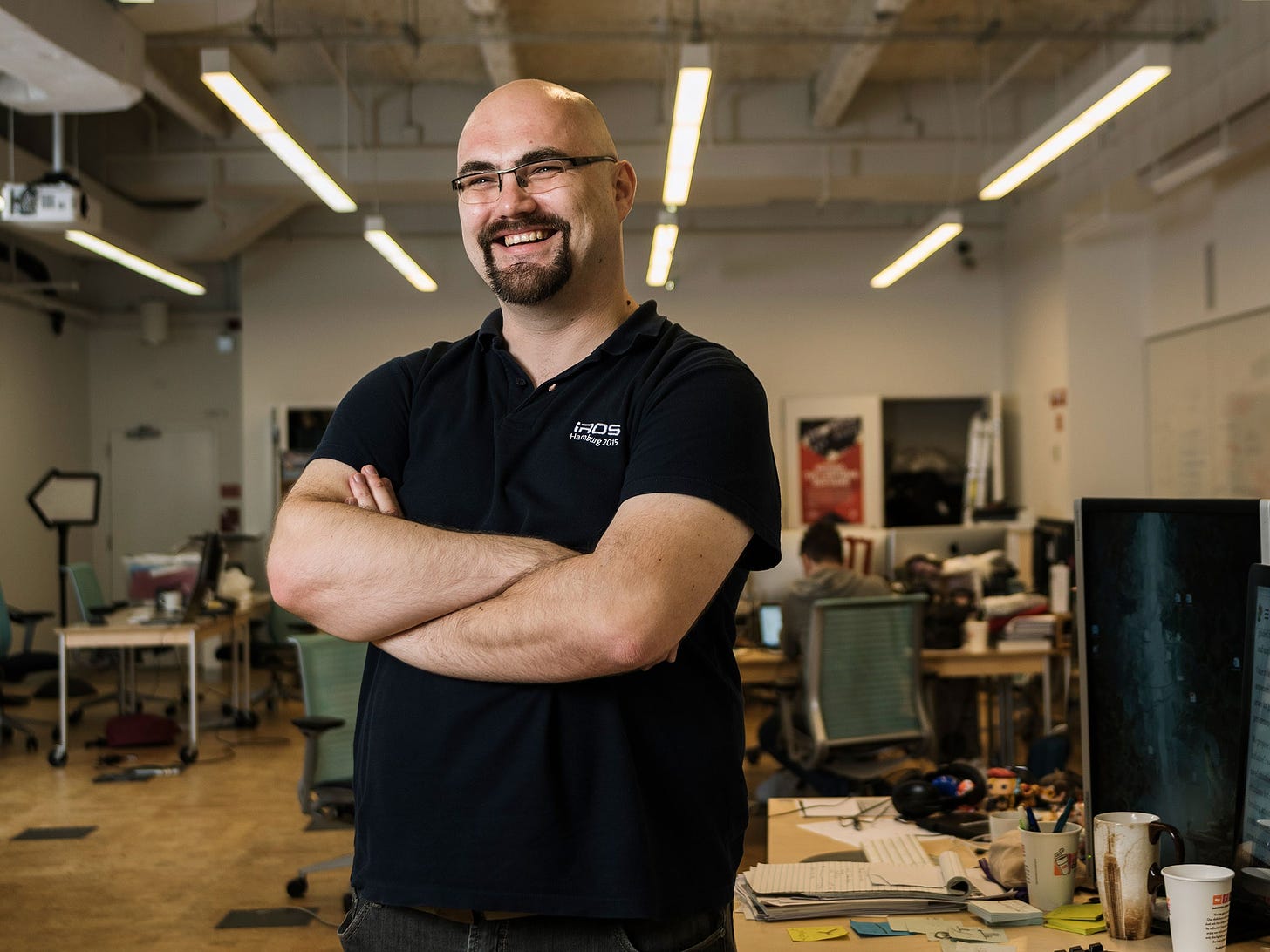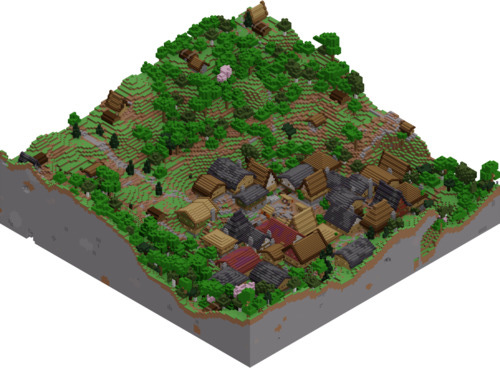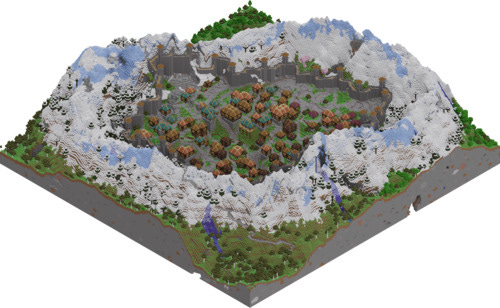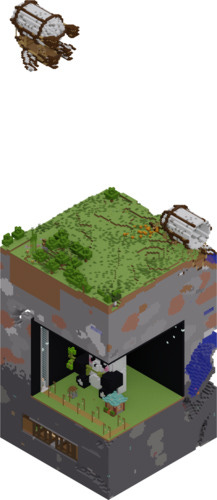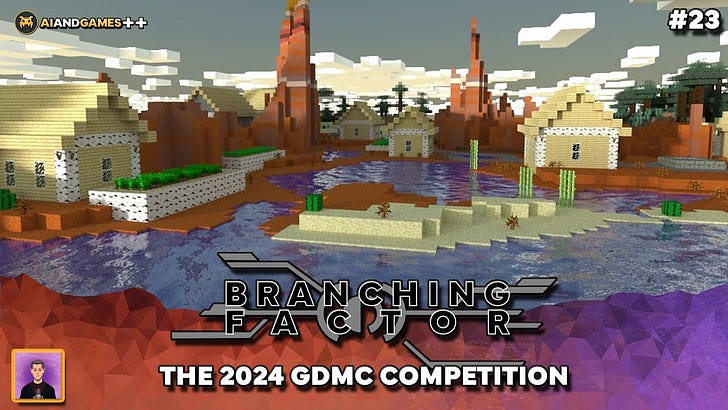The 2024 GDMC Competition | AI and Games Newsletter 04/09/24
Sponsored by Little Learning Machines!
The AI and Games Newsletter brings concise and informative discussion on artificial intelligence for video games each and every week. Plus summarising all of our content released across various channels, from YouTube videos to episodes of our podcast ‘Branching Factor’ and in-person events like the AI and Games Conference.
You can subscribe to and support AI and Games right on Substack, with weekly editions appearing in your inbox. The newsletter is also shared with our audience on LinkedIn. If you’d like to sponsor this newsletter, and get your name in front of our audience of over 6000 readers, please visit our sponsorship enquiries page.
Greetings all, and welcome to this edition of the
newsletter. here as we return to a topic that I unpacked many years ago over the on the YouTube channel: the Generative Design in Minecraft Competition. The GDMC recently celebrated its 7th year, which is no small feat for an event such as this one, and so for this issue I wrangled in the organisers to talk to me about this years event and what’s in store for it in the future.But before we get into that, we have announcements, AI in the news, and some more general ramblings from yours truly. And of course, a word from our sponsor.
With Thanks to our Sponsor
Little Learning Machines!
This edition of the AI and Games newsletter is brought you by the delightful Little Learning Machines by Transitional Forms.
Explore a vibrant world where you can nurture and guide real AI companions, shaping their personalities and abilities with an intuitive system—no coding needed. In Little Learning Machines, every decision you make directly influences your robot’s growth as you guide them through whimsical islands filled with challenges. Customize your companions, train them in real-time, and unlock new possibilities as you level up your AI training skills.
And here’s the best part: a brand new content expansion will be available from tomorrow on September 5th! Explore 18 new islands, take on fresh quests, and unlock adorable new outfits for your robots—all included at no extra cost if you already own the game.
Start Your Adventure with Little Learning Machines Today! Little Learning Machines is available now on Steam, and tune in next week for a dedicated issue all about the game itself.
Announcements
Okay, time to get into some announcements for both the upcoming AI and Games Conference, and other related stuffs!
AI and Games Conference 2024
Our first ever AI and Games Conference is only two months out! We’re very excited to start sharing more details on many of the upcoming speakers and their talks.
A reminder once again of our impending deadlines:
Talk Submission Deadline on September 6th: You have until the end of this week to submit your talk for consideration to the conference programme. Accepted talks will receive mentorship from our advisory board, and receive a complimentary ticket to the event.
Early Bird Ticket Sales End September 13th: We’ve been blown away by the response so far. Thank you to everyone who has signed up to join us in November. Grab those early bird tickets now before the prices go up!
Plus, we are still open to sponsors who wish to support this event and make it as best as possible. To find out more, head over to the sponsorship section of the conference website.
Other Announcements
Right now I have a bunch of cool stuff that isn’t quite ready to share yet. So here’s some good ol’fashioned AI and Games stuffs to point your way.
Upcoming Events: I’m attending these, and speaking at most of’em. You should too.
NEXUS Games Conference, Dublin, Ireland, September 25th and 26th.
2024 iGGi Conference, York, UK, September 11th and 12th
GamesIndustry.biz HR Summit, London, UK, September 18th
‘Large Language Models (LLMs) for Game Designers’ with Gamaste.
Paris, France, October 7th. Lyon, France, October 9th.
Supporting AI and Games on Substack: A big thank you to my paying supporters on Substack. The numbers continue to grow and it’s a great incentive to continue to build this platform as a home for people interested in AI in and around games to build their interest and expand their knowledge in the field. Don’t forget that as a paying subscriber, you get a bunch of cool extras, including the two bonus publications (the sponsor newsletter and the monthly digest), plus extra stuff on YouTube and the Discord server.
AI in the News
Some stories that caught my attention over the past week related to AI in and around games.
The No-Code DOOM Generator [New Scientist]:
Of course everyone is talking about the DOOM generative AI system that renders the game without using a game engine. It’s a trained generative model that based on the current frame and input then generates a new frame. It’s an impressive feat, but it is also - hilariously - undoubtedly the most wasteful and expensive version of DOOM that has ever existed. I plan to return to this given this is far from the first time that DOOM has been used as a research platform - and now I have even more of an excuse to dig into it some more.NaNoWriMo’s Stance on
GenerativeAI Could Be Written Better [NaNoWriMo]:
Okay, so the National Novel Writing Month (NaNoWriMo) is an annual event in which people write a novel - I mean it’s there in the name right? Some of you have no doubt participated in this over the years. Even I did many moons ago, but I never finished (was busy writing other things IIRC). Naturally, writing is an area that has seen generative AI intersect with quite heavily - and there are a number of AI tools out there specifically to support writers, or simply write books entirely.
Naturally, it’s going to be a big talking point in the NaNoWriMo community. But the original post published by the organisers went down terribly, as they suggested that denying participants the ability to use AI tools was classist and ableist. This has led to much discussion on social media, given the concerns that the community has surrounding generative AI did not appear to be addressed whatsoever.
They have since edited it with further clarification, and while I certainly see the points around ableism - in enabling people of various physical and cognitive ability to engage in the practice of writing - I still find their stance on classism bizarre. NaNoWriMo is for many a hobby and fun pursuit to partake in over the month, and the concerns over classism seem antithetical to the whole point of the event. Though by all means if someone can highlight what I’m missing here, please do so!AI is a hammer that can "smash your skin and destroy who you are" [Eurogamer]
Actor Jennifer Hale didn’t seek to mince their words in a recent interview over on Variety. This summary over at Eurogamer takes some of the big highlights and puts it in context. Hale is of course a beloved voice actor in video games, and known for their work as Commander Shepard in the Mass Effect trilogy alongside many other roles. So having a actor of this level of prestige give their voice (sorry) to the issue is an important one.
We will be returning to this topic soon. But let me stress I agree with Hale 100% in their position. Given they only ask for one simple thing: “If you use something that originated in our body or our voices, can we please get paid?"
Pretty simple really.
The Big Story: The 2024 GDMC Competition
For this weeks issue of the newsletter, I wanted to revisit a topic I covered several years ago on the YouTube channel, and provide an update on what is happening in it today: the Generative Design in Minecraft Competition. First I’ll bring you up to speed on the event, and then I’m pleased to welcome one of the competition’s organisers, Dr Christoph Salge, to share a few words from his perspective on how things have gone down this year.
About the GDMC (and Games/AI) Competitions
The GDMC started way back in 2018, with the idea of providing an avenue for research in procedural content generation - the process of designing content (levels, characters, storylines, you name it) using some intelligent algorithm. The idea of using popular games as platforms for research is far from novel, given I’ve explored this idea in years past with games such as Ms. Pac-Man, Super Mario Bros., and StarCraft. Not to mention of course the work by corporations such as Google DeepMind on Atari games, StarCraft 2, and OpenAI’s work on Dota 2. But Minecraft is arguably one of the youngest games to have became an AI benchmark in recent years - with Overcooked probably being the youngest right now (and I really need to do an case study on that topic sometime).
The reasons for games to become benchmarks for research are often numerous. Ranging from broad familiarity with the problem space, to being a shared domain within which to express ideas. But perhaps most critically, there is a game that people can utilise from the get go, rather than building their own games and simulators to explore their research ideas. Speaking from experience - where the first ‘games' I designed in my professional career were built largely for AI to learn to play them - having an existing benchmark (and API) to hook into is ideal. Given you can focus more on building your research ideas and train your AI systems rather than having to also worry about being a game designer and programmer.
But anyway, back to the GDMC. It’s perhaps one of the most novel competitions from academia that has persisted this long for a number of reasons. First and foremost, it’s about generative systems: building programs and algorithms to procedurally generate content. This is in stark contrast to most other research of this ilk where the interests are in building AI that controls players to become as optimal as possible. In fact, there are other Minecraft competitions that focus on optimal player creation, but the GDMC is still one of the few events all about building algorithms for procedural generation purposes.
The idea itself is pretty straightforward: write an algorithm that can generate a 'settlement’ - a village, a city, whatever you like - when provided with a Minecraft map. Participants are expected to build systems that can handle different terrains and geometric features.
A quick editorial note for anyone not familiar with the space. The term ‘generative’ in the context of the GDMC is in reference to the idea of building systems that generate ‘content’ (i.e. procedural content generation). It does not mean that the entries rely on generative AI systems to achieve their goals. Generative AI is simply a term used to denote a specific type of content generation algorithms that are reliant on machine learning techniques.
Though of course, a participant may well opt to use generative AI to address the challenge presented by the GDMC.
Previously on AI and Games…
Back in 2019 I released a video (above) all about the GDMC competition to celebrate the end of the 2nd iteration of the event. Full disclosure in that not only do I know many of the organisers of this event, I have also acted as a judge of the competition in previous years. Typically this judging happens behind closed doors, and the results are later revealed by lead organiser Dr Christoph Salge from the University of Hertfordshire. However, we have broken that rule in recent years, with my judging happening live on YouTube and Twitch in 2022 and 2023. Sadly my work commitments prevented me from dedicating the time to judge the submissions for 2024, but my musings from the 2023 submissions are still live on YouTube where I spent 3 hours playing through each entry and discussing their merits..
Welcome Dr Christoph Salge
And so having now set the scene for you a little. I want to welcome Dr Christoph Salge to take over for the remainder of this story and tell us all about this years event.
Christoph, the floor is yours!
The AI Settlement Generation Challenge in Minecraft has just announced the winners for its 7th annual round. The goal of the competition is to write an algorithm that can, without human intervention, generate an ``interesting’’ Minecraft settlement that fits well into an unknown Minecraft map. Participants submit those algorithms, then their code is applied to a few competition maps, and the resulting settlements are then sent out to human judges to play and evaluate them.
Past judges have included academics, game designers, and online content creators, including. The generated villages are evaluated based on four criteria, functionality, narrative, aesthetics, and adaptivity. The last criterion, adaptivity, is particularly hard, as it measures how well a settlement fits into the existing map, i.e. how it adapts to other, already generated content.
The History of GDMC
The GDMC competition was founded in 2018 with the goal to generate interest in, and push the state of the art, in adaptive and holistic Procedural Content Generation (PCG). From a scientific perspective, the two main challenges were to make content that fits in with existing content (adaptivity) and that has to be holistically good in several different facets, such as narrative, functionality, aesthetics, etc. Minecraft Settlement were chosen as an artefact, as they provide for both of those challenges, and allow for fully embodied co-creativity, i.e. moving towards a state of the art where an AI can build a Minecraft Settlement together with you live. Inspiration was drawn from those classic Minecraft timelapse videos. In those videos many people build massive settlements together, demonstrating that while this is a incredible hard problem for AIs, it is something easily solvable for humans. A new frontier that `artificial’ intelligence had yet to conquer.
The GDMC Meta
Over the years the GDMC competition has seen many developments, and most of the generated settlements and the code generating them is available on the GDMC wiki.
Early years struggled with things such as road placement and lights, while those are now considered solved problems. Many steps from one year to another are marked by a perceived lack of one ability, such as properly building bridges in year two, to then, a year later, many participants finding a solution to this. Similar challenges include the design and placement of singular landmarks, the development of modular and non-templated buildings, and the construction of large mega structures, particularly adaptive city walls.
The AI approaches to the competition have also changed. Earlier years have gone far with rule based AIs, while later years have started to experiment with various approaches, such as generative grammars, cellular automata, constraint satisfaction, genetic algorithms, wave function collapse, and more. With the advent of machine learning and generative AI there has been a large interest to use those `modern’ approaches, but the two submitted entries using GANs and similar approaches have not been particularly successful so far. A good reflection of this vivid development is probably the large amount of research that has been published within and about the GDMC competition.
Finally, the competition itself has also changed over time, to push for bigger and bigger challenges. The two main changes were the introduction of the chronicle bonus challenge, asking participants to produce a book inside the world that is in some way about the settlement, and the introduction of existing previous settlements the generators had to adapt to. On a technical side, the competition has also moved on from using the MCEdit map editor towards a community-developed purpose-build framework that allows the generator to interact with the world as Minecraft is running. This, in theory, allows one to observe as the settlement is being built and would even allow you to interact with the settlement as it is being built.
The 2024 Results
The current competition has again seen some interesting new developments.
First Place - SpecificProtagonist
The winner of the 2024 round used a custom-written framework that used Minecraft data packs to create a replay of the full building process of the settlement when someone first logs into the finished maps. So, without installing any mods themselves, the judges of the competition could observe how the simulated villages set out from a starting location, located and harvested trees and other resources, including the construction of an animated quarry, and then transported those back, including via boats, to then use them to build a cozy settlement. The live-constructed settlement also featured many established features, such as believable, well-constructed roads, diverse and somewhat varied buildings, storage places for resources, interior furnishing, etc. For the future, it will be exciting to see if this replay functionality will become an integrated standard, or if we might quickly move to actual interactive generation, where the judges are able to influence where the generator is going.
Second Place - Shadow Wizard Money Gang (SWMG)
The SWMG is a returning team that also came second the year before. While many other entries create settlements by finding good places for houses and roads, their entry used the second most common paradigm, splitting the existing spaces into regions and then putting something appropriate into the resulting spaces. This created a dense, tightly clustered city. They rounded out their entry with a massive example of the popular city wall feature, and lots of atmospheric decorations. Their entry looks particularly stunning at night.
Third Place - PanderWorld
PanderWorld is an entry from Ritsumeikan University, who have submitted several panda-themed entries over the past years. There has been a lot of code reuse between years (something encouraged at GDMC, along with code sharing), so we see a return of stunning temples, automated fireworks, and way too many pandas. This year's entry weaves the previous entries into a coherent storyline, bringing us a Fallout-like tale of post-apocalyptic pandas living underground due to the desolation that they caused themselves. All this can be seen in their extensive, in-map library. Unsurprisingly, they also won the chronicle bonus challenge with this entry.
Best Underground Structure - Niels-NTG
The bonus prize for the best underground structure goes to Niels-NTG, who used wave function collapse to generate a physical library that holds the metadata of all public research on Arxiv. Part art project, and part data game, this unusual approach to settlement generation makes an interesting statement about human knowledge, and points towards quirky new approaches one can take. While there has been much talk about using real-world data to enhance the believability of Minecraft settlements, they are usually focused on terrain data.
Future of the GDMC competition
The GDMC competition will be back for another round in 2025, with a deadline for submission around May or June of that year. There might be a few minor changes to the challenges or the framework yet to come, but if you are interested in joining, you can check out the resources below, join the community, and get started.
More on the GDMC
Okay, Tommy’s bank at the helm! Christoph, thank you so much for taking the time to share this with us. I hope everyone found it interesting.
For more on the GDMC, here’s some starting points for you:
Visit the GDMC Wiki to learn more about the event. Including previous competitions results, starter guides, supporting code and documentation and much more!
Join the GDMC Discord server to chat with the organisers and other members of the community. Speaking from experience, it’s a friendly little space.
Finally, check out the episode of Branching Factor we dropped last week here on AI and Games.
Wrapping Up
Okay, it’s time wrap things up for this issue of the newsletter. I hope you’ve found this deep dive into the GDMC of interest.
Join me next week as we talk some more about this weeks sponsor: Little Learning Machines! A game that doesn’t just make you teach AI to solve puzzles, it also teaches you how the underlying AI works.
Once again a quick reminder: Little Learning Machines is available now on Steam, and tune in next week for a dedicated issue all about the game itself.






